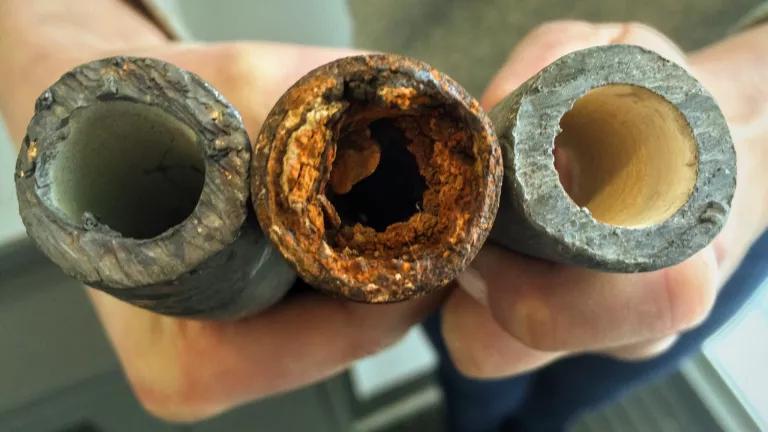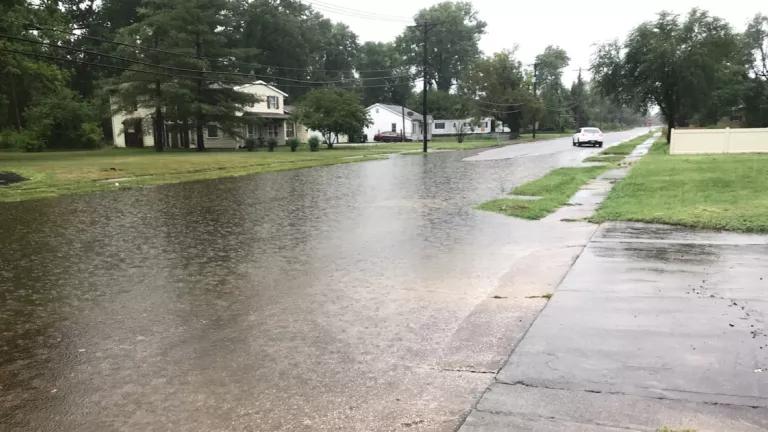Illinois Must Be a Leader on Lead Service Line Replacement
Illinois has the most lead service lines in the country and it's time they get the lead out.

Examples (from left) of a lead pipe, a corroded steel pipe, and a lead pipe treated with protective orthophosphate
U.S. EPA Region 5
The Illinois Legislature introduced a bill last week that would mandate that all water utilities begin the process of replacing all of the lead service lines within the state. This replacement of dangerous lead service lines would have a direct impact on protecting the health and well-being of all Illinoisans—especially the most vulnerable communities.
Lead in drinking water is one of the biggest threats to human health in the United States. For years, NRDC has worked to get lead pipes out of the ground throughout the country in places like Michigan, New Jersey, and Pennsylvania to name a few. And it has become increasingly clear: water systems cannot keep waiting for a crisis to strike before they take the steps necessary to fix the problem. With lead being a neurotoxin that causes irreversible harm to human development, by the time a crisis happens, it is already too late.
The federal government has failed to take the meaningful steps to address lead in our drinking water so it’s more critical than ever for Illinois’ Legislature to step up and take bold action. Similar to the neighboring State of Michigan, Illinois must mandate full lead service replacement, ban the dangerous practice of partial replacement, and establish an equitable revenue source which ensures that individual homeowners and ratepayers won’t have to shoulder the burden of paying to replace these lead pipes.
The public health threat posed by outdated lead drinking water infrastructure in Illinois is greater than those faced by any other state in the U.S. As the state with the most lead service lines in the country, estimated 730,000 to 1.4 million lead service lines, essentially every Illinoisan is at risk of exposure to lead-contaminated drinking water—noting the environmental injustice that Black and Latinx Illinoisans are twice as likely to live in communities with lead service lines than white residents.
However, this threat should also be seen as a significant opportunity for Illinois to be a national leader on water infrastructure innovation. And that leadership should start with the passage of equitable legislation that finally begins the long process of getting lead pipes out of the ground and getting lead out of the drinking water of millions of Illinoisans. Because as the science has shown us, not even the smallest amount of lead in drinking water is safe for human consumption.
To learn more about Illinois' lead in drinking water problem and the equitable solutions to fixing it, check out this short video from the Metropolitan Planning Council:



